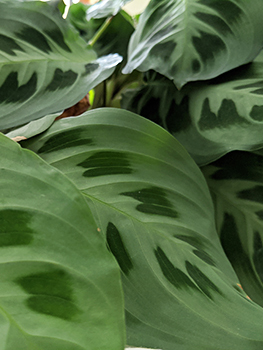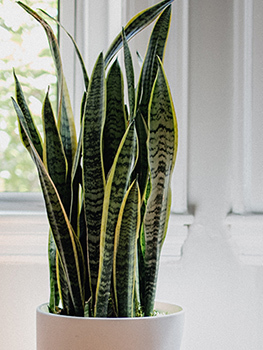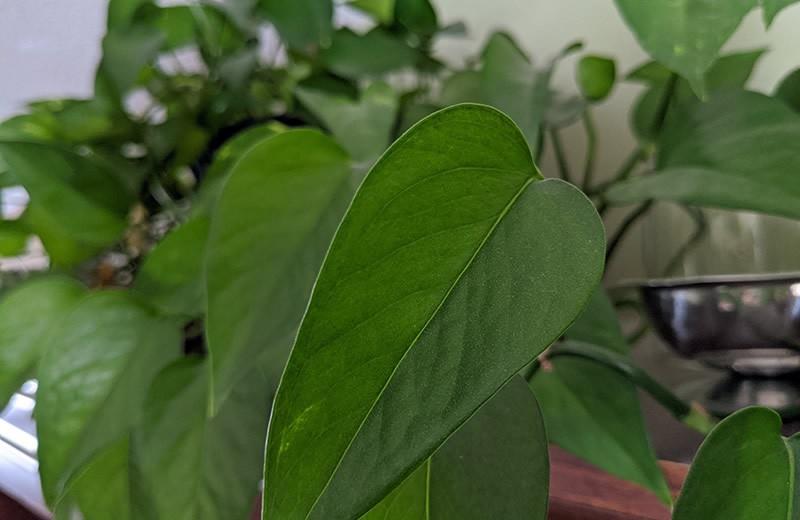
The first article of this series explored the concept of biophilia, the need for a connection to nature, as a mental wellness pick-me-up. Apparently, the era of biophilic design with green integration for our inside spaces is here and growing in popularity in both public and private spaces. Even here in our region, Prince George’s Exploration Place is creating a living wall for the new paleo-botany hall. If you have large older plants that need a new home, or want to contribute plant clippings, send an email to plants@theexplorationplace.com to learn how you can get involved. Beyond our city, perhaps you’ve noticed other biophilic designs trending or new hashtags like #houseplantsofinstagram or the #stayhomewithplants challenge from #urbanjunglebloggers?
The challenge in Northern BC is the reduced winter daylight available in our homes and office spaces to bring our dreams of interior urban jungles to life. In part one of this series I provided information on African violets, Christmas cacti, Fig trees, Peace Lilies, and Ponytail palms. Now, here are my additional five favourites to suggest for your houseplant collection. Then you too can post your success on Instagram!
- Pothos or Devil’s Ivy (Epipremnum aureum) – Whether solid green or variegated, this plant will live for decades, as long as you don’t overwater. These resilient plants will endure life on dark upper shelves, tucked away behind furniture or hanging in corners. It’s best to trim the plant to encourage a bushy growth rather than having one long strand growing in the pot, so be sure to trim regularly. Pothos are easy to propagate: put the trimmings in a jar of water and plant back in the same pot when roots appear. Doing this will keep your Pothos thick and bushy.
- Prayer plant (Maranta leuconeura) – This plant is available in green or variegated varieties. It does best in areas that don’t receive any direct sunlight, as this will burn the leaves. I find this plant enchanting with its floating fairy-like flowers and (bonus!) it folds up at night! Hence the name Prayer Plant, but the fact it moves on its own may catch you off-guard in the middle of the night when you’re getting a glass of water and hear a rustling sound…
- Snake plant or Mother-In-Law's Tongue (Sansevieria trifasciata) – You can almost forget about this plant, as it requires so little attention - water only when needed. I have had snake plants live for decades and usually after 10 years when they are mature enough, they will flower. Surprise!
- Spider plant (Chlorophytum comosum) – A great hanging plant that brightens a space with its variegated leaves and petite white flowers. The trick to this plant is to not overwater – less is more. You can clip off the branches and remove the baby spider plants to add back to the pot to fill in thin areas or start new plants. Just wait until you see root nubs on the baby spider plants first before you remove them so they have a better chance of growing.
- Zee Zee plant (Zamioculcas zamiifolia) – Looking for a plant to go with your Snake plant that you can also pretty much ignore? Then try the Zee Zee plant. While this plant is a slow grower, I still find it to be sturdy and handsome.

A snake plant is a perfect addition to any corner in almost any room in your house.
These five suggestions, just like the previous five, all require less light, less attention, and less water. I have larger plants in my home so I am able to go up to two weeks without watering, and up to three weeks with my cacti plants – so less is more!
I will leave you with a few houseplant resources to browse:
- A-Z index of houseplants – House Plants Expert
- Encyclopedia of houseplants – Apartment Therapy
- House Plants Encyclopedia A-Z – Guide to houseplants: Green your home
- Houseplants – Better Homes and Gardens
- Plant Encyclopedia – PlantSnap
Are you planning to post your new urban jungle to Instagram? Share with us in the comments!














Comments